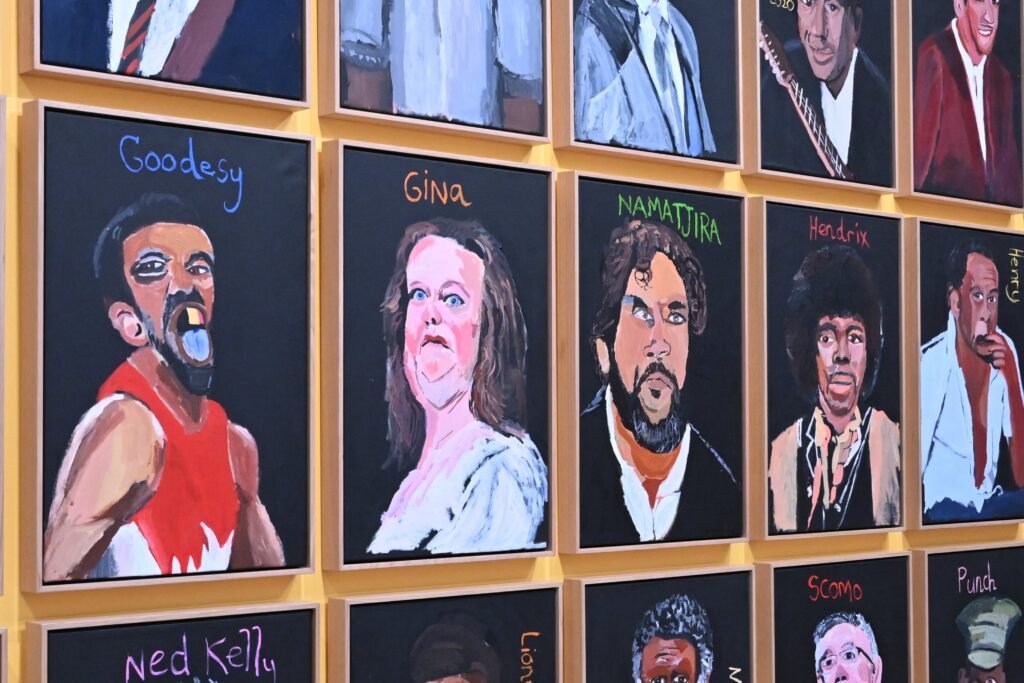Although Rinehart has reportedly called for Namatjira’s painting to be taken down, the initiative apparently comes from members of the Australian swimming team and their former coach (Rinehart is that sport’s major private sponsor).
I suspect their discomfort comes from reading Namatjira’s Gina as a moral portrait; that is, ugliness of appearance projects an ugly spirit (whereas for them she is the epitome of generosity).
It’s an interesting idea that the fresh-faced teenage daughter of Lang Hancock in old news photos has changed not just because times takes beauty away (as we all know), but because of the impact of things she inherited from her father: not just the extreme wealth and the jawline, but the conservative views, and the ways she has used her money and power.
Her control of vast tracts of (unceded) grazing land across western and central Australia give reason to reflect on what Western Aranda man Namatjira might think of her.
And yet what about commissions?
When can a sitter control their portrait image? Only when they commission the work. Art history has plenty of cases in which a sitter has rejected their portrait. Monet in the 1860s painted his brother Leon, who so disliked the canvas he locked it in an attic, from which it emerged 150 years later.
Portrait paintings have had to be altered, payment refused, or be paid for then destroyed. The commissioned portrait, it’s assumed, must flatter the sitter or at least offer a fair and non-judgemental likeness.
The British royal family has historically been very forgiving about portraits, and has the sophistication to know it is futile to protest a likeness. Doing so invokes the perverse “Streisand effect”, as we see happening with Namatjira’s Gina.
There are dozens of depictions of Elizabeth II and Charles III in Namatjira’s pantheon – including one of the late queen alongside Rinehart in Australia in Colour. Namatjira has a family link to Elizabeth and Prince Philip, who met Albert Namatjira (the painter’s great grandfather) on their 1954 tour of Australia.
But no one is asking for Queen Bess to be removed from the National Gallery of Australia.






